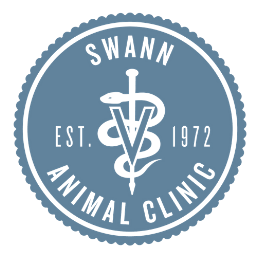One of my favorite parts of veterinary medicine is preventative medicine. Why? Because it’s the best and easiest way for me to keep my patients happy and healthy. The center of preventative medicine is vaccinations. In today’s society, vaccinations have fallen under scrutiny. I will never judge anyone for their opinions, but I can make you this promise – I will only suggest vaccinations that your pet needs and are for their best health. One of the most important vaccinations I give is the Rabies vaccination. I think people forget how vital this vaccination is. The Rabies virus is one of the few zoonotic (able to pass from animal to human) diseases that is fatal to you and your pet every single time. With this vaccine, I am not only protecting your loved one, but I am protecting you and your family. There has been a drastic increase in the number of rabid animals in the Panhandle, so this month, I am focusing on this disease to help raise awareness!
In order to understand this disease, we need to talk about how it works. Rabies is a virus that is usually transmitted through a bite wound. An open wound or mucous membrane (gums, inside your nose, etc) must come in contact with infected saliva or neural tissue (brain, spinal cord, nerves). After an animal or person is bit or infected, the virus travels up the peripheral nerves toward the spinal cord. Once it reaches the spinal cord, the virus spreads quickly to the brain. Once it is in the brain, it travels out to the salivary glands and other parts of the body through the nerves again. Neurologic signs will begin once it is in the central nervous system.
There are many animals that are considered high-risk carriers. In the Panhandle, the most common ones to be aware of are skunks, raccoons, and bats. Other animals, such as wolves and foxes, can also be carriers but are not as high of a risk. Dogs and cats are very susceptible to the disease. Due to the high numbers of positive rabies in the Panhandle this year, we have seen an increase of Rabies quarantine cases as well. Most people have heard of this, but don’t realize there are different types of quarantine, so let’s talk about those:
- Ten Day Rabies Quarantine – This quarantine is the most common. This is for any dog or cat that bites a human. They are quarantined for 10 days then vaccinated for Rabies at the end of the 10 days if they do not show any neurologic signs.
-
Forty-five Day Rabies Quarantine – This is for any dog or cat that is current on their Rabies vaccination and is exposed to a possibly rabid animal. This has been a common problem this year due to all of the skunk attacks and skunks testing positive.
-
Ninety Day Rabies Quarantine – This is for any dog or cat that is NOT current on their Rabies vaccination and is exposed to a possibly rabid animal. This has also been a common problem this year.
If any animal is brought in after being attacked or biting a person, Animal Control must be called. They are the local Rabies authority for the area and are in charge of all cases involving Rabies in any way. It is vitally important that you are honest when this happens because it truly could be a life or death issue. Sometimes a case will not go well and the animal will have to be tested. The only way to test an animal for Rabies is by testing the brain tissue and is done in Austin. If you have been bitten by an animal that is not current on vaccinations or is exposed to any of the high-risk animal species, please call your doctor to discuss if post-exposure prophylaxis should be given.
I’m not going to lie – when you study Rabies and see animals and people die from it, it is a scary disease. The Texas Panhandle alone has had 49 positive Rabies cases so far this year. The good news is that there is prevention for our furry loved one that is extremely effective. It is a safe vaccination and is literally life-saving. As veterinarians, part of the oath we take states that we will “protect the health of the public.” It is one of the statements I take most seriously. Please listen to your veterinarian about this disease and all the others we vaccinate for. We love your pets and we love their owners!
About the Author
Dr. Heritage Enevoldsen
 Dr. Heritage Enevoldsen was born and raised in Amarillo, Texas. She had always dreamed of finding a job that would allow her to minister to and bless people, but also involve her love for animals, so being a veterinarian was just the right fit! She received her Bachelor of Science from Texas A&M University before graduating from Texas A&M College of Veterinary Medicine in May of 2017. Her goal was always to come back and serve the people of the Texas panhandle. Dr. Enevoldsen has a special interest in dermatology, surgery, and dentistry as well as client education. When she isn’t working at the clinic, Dr. Enevoldsen loves spending time with her son and husband, reading, and anything to do with the Fighting Texas Aggies. She is a dog mom to her pet, Mark, who is the most handsome mutt you have ever seen.
Dr. Heritage Enevoldsen was born and raised in Amarillo, Texas. She had always dreamed of finding a job that would allow her to minister to and bless people, but also involve her love for animals, so being a veterinarian was just the right fit! She received her Bachelor of Science from Texas A&M University before graduating from Texas A&M College of Veterinary Medicine in May of 2017. Her goal was always to come back and serve the people of the Texas panhandle. Dr. Enevoldsen has a special interest in dermatology, surgery, and dentistry as well as client education. When she isn’t working at the clinic, Dr. Enevoldsen loves spending time with her son and husband, reading, and anything to do with the Fighting Texas Aggies. She is a dog mom to her pet, Mark, who is the most handsome mutt you have ever seen.
